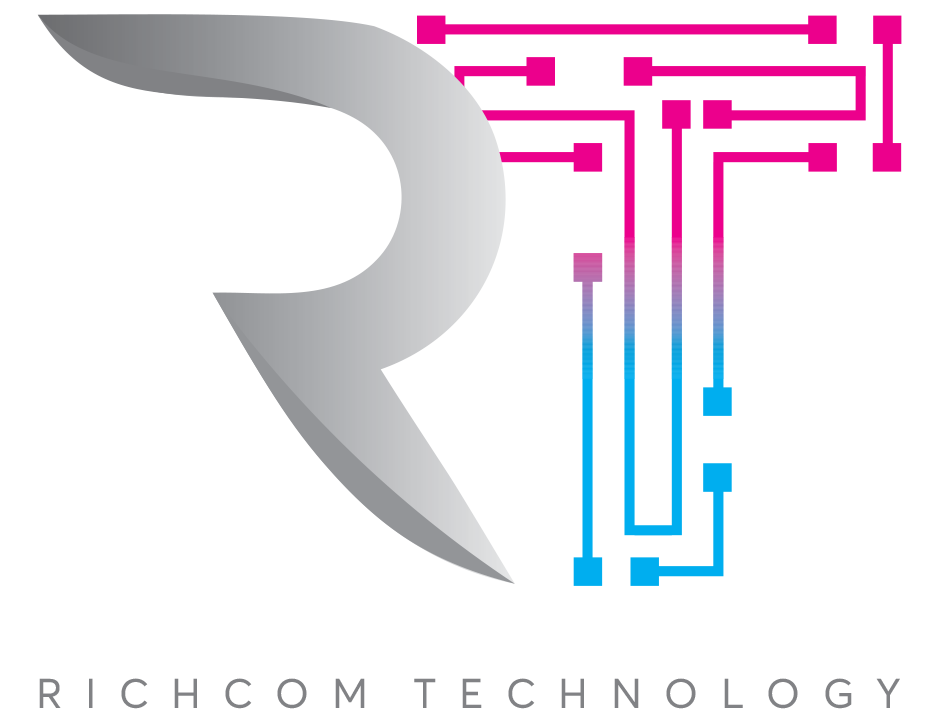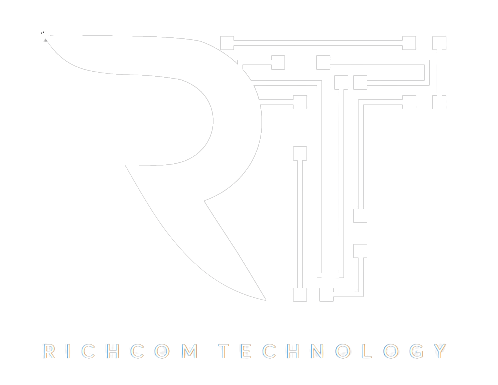Original Vs Compatible Toner Cartridges: Which One Is Better? 2025
In 2025, selecting between original equipment manufacturer (OEM) toner cartridges and compatible alternatives remains a critical decision for printer users. OEM cartridges consistently promise superior print clarity, higher page yields, and guaranteed compatibility. Conversely, compatible cartridges offer significant cost savings, despite potential compromises in long-term reliability and printer warranty concerns. Examining key factors such as print quality, environmental impact, and overall value will help users determine which cartridge type merits their investment.
Cost Comparison: Original vs. Compatible Toner Cartridges
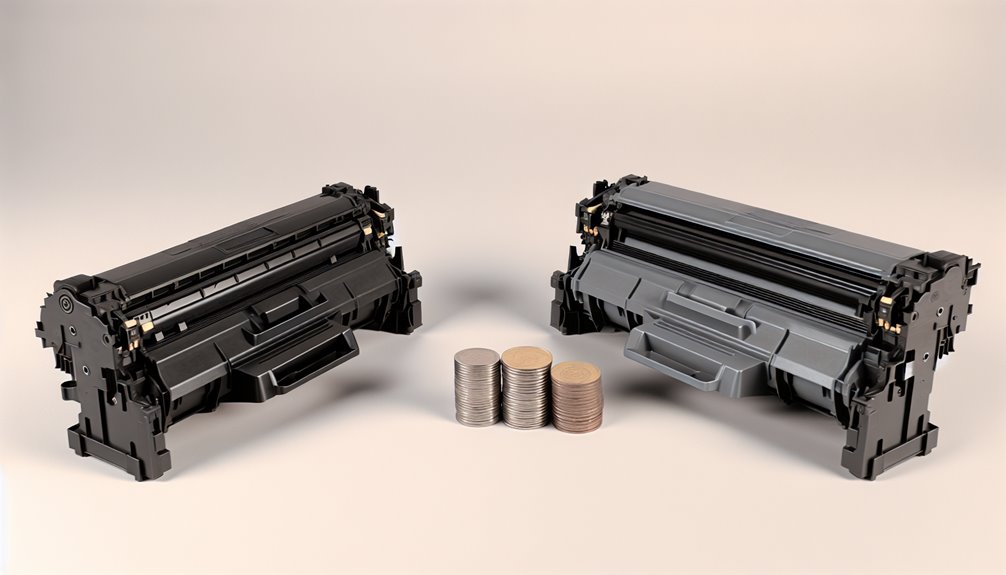
Many consumers evaluating toner cartridge options begin by examining cost differences between original and compatible cartridges. Original equipment manufacturer (OEM) toner cartridges typically involve a higher upfront cost; however, users may experience better long-term value resulting from superior page yields, which often translate into cartridges lasting longer and requiring fewer replacements.
In contrast, compatible toner cartridges provide consumers with an immediately cost-effective solution, as their prices are generally 20% to 50% lower than OEM cartridges, depending on the specific brand and printer model, making these products particularly appealing to budget-focused buyers.
Nevertheless, while initial savings are attractive, compatible toner cartridges may incur higher cumulative expenses if their lower page yields necessitate more frequent cartridge replacements.
Additionally, consumers must consider potential warranty implications; the use of compatible toner cartridges could void printer warranty coverage, potentially leading to increased repair or replacement costs in the event of printer malfunctions or cartridge issues.
Print Quality and Performance Differences
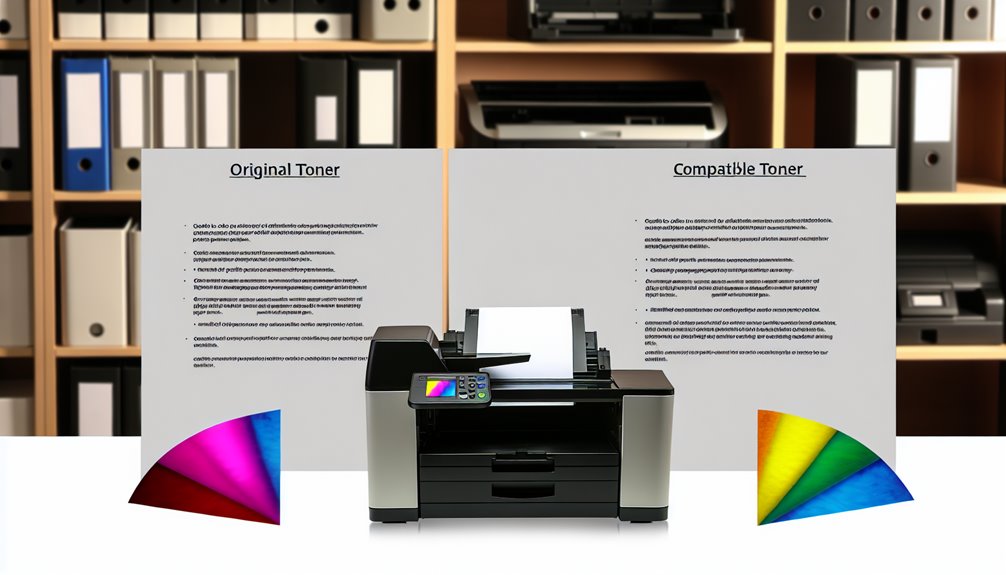
When evaluating toner cartridges, print quality and performance differences between original equipment manufacturer (OEM) and compatible cartridges become critical factors influencing consumer choice.
Genuine OEM toner cartridges consistently deliver superior print quality, characterized by accurate color reproduction, crisp text, and detailed imagery. In contrast, compatible toners often exhibit variations in density and color accuracy, impacting overall print consistency and visual clarity.
Notable distinctions include:
- OEM cartridges typically achieve higher page yields of up to 20,000 pages, whereas compatible toners frequently necessitate more replacements due to lower page capacities.
- Prints produced with OEM cartridges demonstrate greater resistance to fading, enhancing durability and longevity compared to those made with compatible toners.
- The absence of strict manufacturer oversight results in significant performance variability among compatible toners, potentially causing cartridge malfunctions and subpar printing outcomes.
Consequently, consumers prioritizing ideal print quality may prefer OEM cartridges despite their higher costs.
Environmental Impact: Which Cartridge Is Greener?
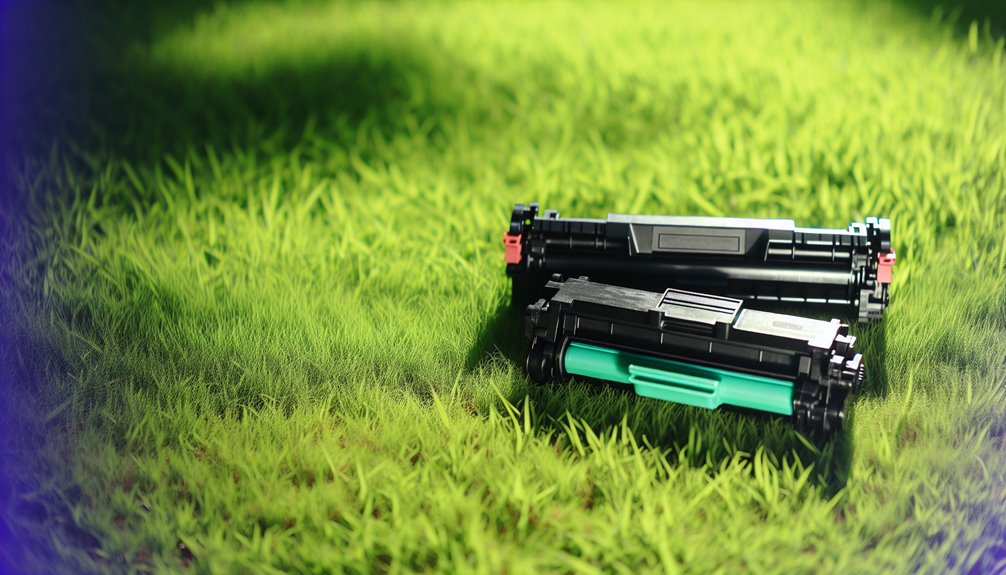
How do original and compatible toner cartridges compare regarding environmental sustainability?
Original Equipment Manufacturer (OEM) cartridges typically incorporate sustainability initiatives such as recycling programs, facilitating responsible disposal and reducing their overall environmental footprint. These programs considerably lessen cartridge waste accumulation in landfills, thereby mitigating ecological harm.
Conversely, compatible Toner cartridges vary considerably in their adherence to environmental standards; while some manufacturers offer recycling programs, others lack such initiatives, potentially resulting in increased waste.
Remanufactured cartridges, however, represent the most environmentally sustainable option. By reusing existing cartridge components and limiting the production of new materials, remanufactured cartridges greatly diminish landfill waste and resource consumption.
Consequently, selecting remanufactured cartridges generally leads to a reduced carbon footprint compared to single-use OEM or compatible alternatives.
Ultimately, the environmental impact associated with toner cartridges largely depends upon the consumer’s choice to support recycling efforts and preference for remanufactured cartridges over single-use options. Please visit Canon Compatible Toner prices in Sri Lanka for environment conscious products.
Printer Compatibility and Warranty Considerations
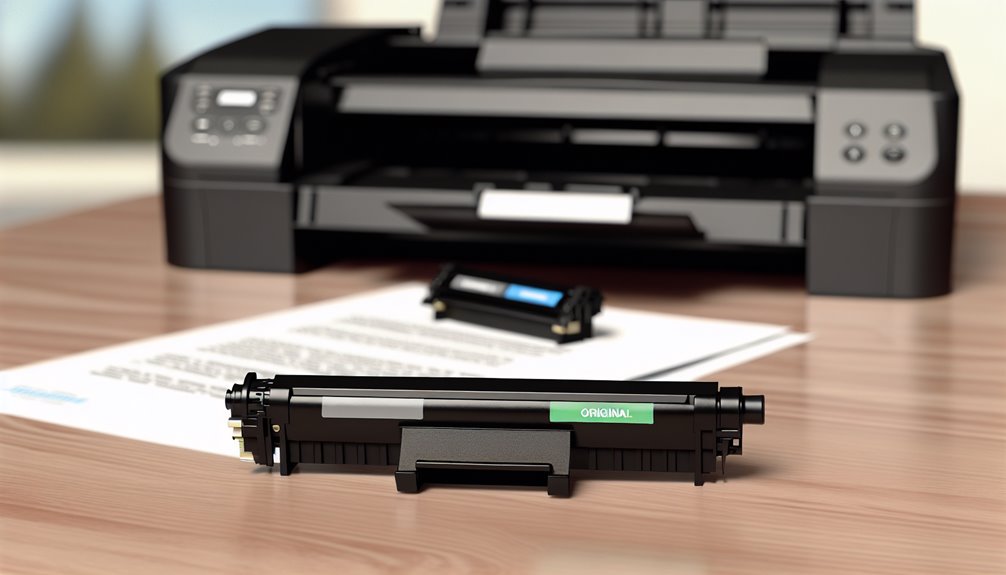
Why does printer compatibility matter when selecting toner cartridges? Printer compatibility greatly impacts print quality and device functionality. Genuine OEM toner cartridges are engineered precisely for specific printer models, ensuring ideal performance, consistent print output, and device longevity.
Employing incompatible cartridges risks malfunctions, diminished print quality, or recognition errors, potentially impairing productivity and increasing maintenance costs.
Warranty considerations also play an important role in cartridge selection. Many manufacturers explicitly stipulate warranty terms based on cartridge usage, creating potential financial implications:
- Using OEM cartridges typically maintains manufacturer warranty protection, safeguarding against cartridge-related printer issues.
- Employing compatible or remanufactured cartridges often risks voiding the manufacturer’s warranty, potentially incurring additional repair expenses.
- Selecting reputable vendors for compatible cartridges helps mitigate warranty risks by ensuring product reliability and compatibility.
Carefully verifying printer model and cartridge specifications remains essential to prevent technical issues and warranty invalidation associated with incorrect toner cartridge selection.
Reliability and Longevity: Original or Compatible?
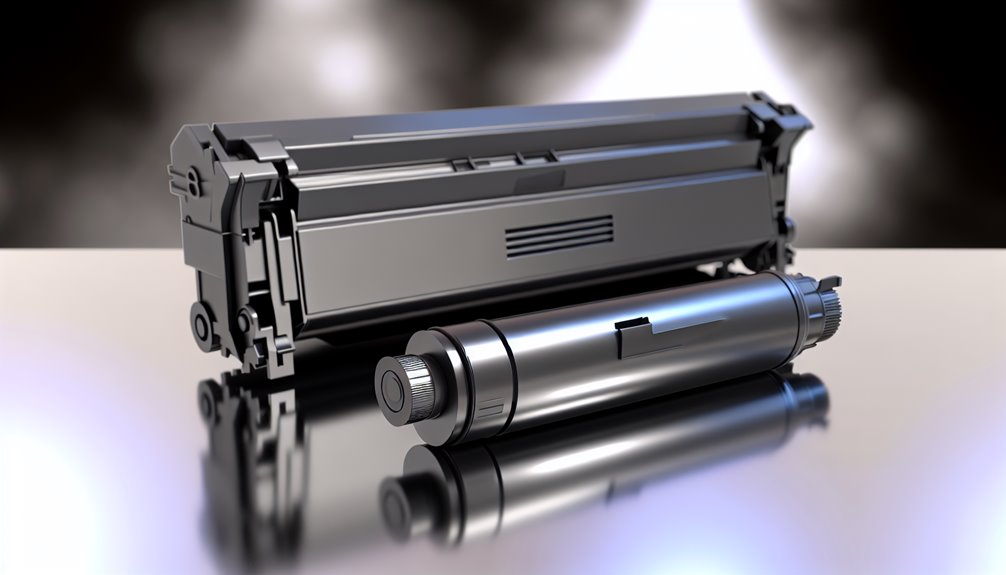
Consumers frequently prioritize reliability and cartridge longevity when deciding between original equipment manufacturer (OEM) toner cartridges and compatible alternatives.
OEM cartridges consistently demonstrate higher reliability, largely due to rigorous quality assurance processes mandated by manufacturers. These procedures result in markedly lower fail rates compared to compatible cartridges, which may lack stringent quality controls and experience occasional malfunctions and print quality inconsistencies.
Regarding longevity, OEM toner cartridges typically possess superior lifespan characteristics, with certain models capable of yielding up to 20,000 printed pages.
In contrast, compatible toners generally offer fewer pages per cartridge and may experience accelerated performance degradation. Additionally, original cartridges excel in maintaining print clarity, vibrancy, and color accuracy over extended periods, resisting fading more effectively than compatible counterparts.
Moreover, the use of OEM cartridges traditionally preserves printer warranties, whereas opting for compatible alternatives can potentially void warranties, resulting in unforeseen repair expenses and increased long-term costs.
Conclusion
To summarize, selecting between original and compatible toner cartridges involves balancing performance, reliability, environmental considerations, and budget constraints. OEM cartridges consistently offer superior print quality, increased page yields, and greater reliability, but at a higher initial investment. Compatible cartridges provide significant upfront savings; however, their reduced page yields and potential warranty implications may diminish long-term cost-effectiveness. Ultimately, users must objectively evaluate their individual priorities and printing requirements when determining the best cartridge solution. Please visit HP Compatible Toner Prices in Sri Lanka for the best deals.
